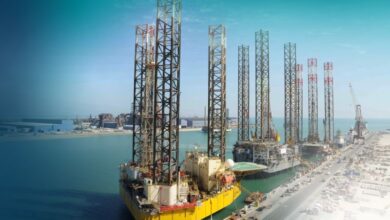Danos targets effective JSAs, use of stop work authority in lifting training
By Linda Hsieh, managing editor
Data trends continue to indicate that, when it comes to crane and lifting incidents in the drilling industry, the majority are not caused by equipment failure or a lack of maintenance. “The majority of our incidents are due to human error,” Mark Simoneaux, training manager for Danos, said at the API 2013 Offshore Safe Lifting Conference on 16 July in Houston. To address this trend, Danos has focused its efforts on enhancing training for its employees. This includes providing more quality hands-on sessions, emphasizing the importance of stop work authority to employees and ensuring job safety analyses (JSAs) are carried out effectively. The goal is to address “human error or behavioral patterns that put ourselves in harm’s way,” Mr Simoneaux said.
The JSA is a critical component of every lift plan at Danos, and Mr Simoneaux said that significant effort has been devoted to ensuring clear JSA lift plan language. “We want to make sure that people truly understand what the language is that they’re hearing, about hand placement, ergonomics, body placement,” he said. To ensure true understanding among lift participants, he said, it’s important not to use canned JSAs or simple checklists “where people don’t really become involved in the process or they’re not part of the thinking portion of planning that job.”
Danos’ training efforts also have highlighted the use of stop work authority, with Mr Simoneaux noting that personnel often remain reluctant to exercise this authority despite repeated encouragement by management. “I think that’s one of the huge challenges we face as an industry is to make everyone really understand the importance of stop work authority and its use. It has to be part of our daily operations regardless of what we do,” he said.
Danos specifically asks its training providers to incorporate training elements into its hands-on sessions that would cause employees to use stop work authority, he added. “We want to have them actually doing behavioral observations during the training process.
The lift plan itself must incorporate all individuals involved in the lift operation, as well as verify that everyone who is involved is actually qualified to participate on the lift team. “Part of the lift is our responsibility to verify the crane rigging, the maintenance, inspections, certifications are all up to date… At the end of the day, the end user is the one most susceptible to injury. If some guy sitting in Houston tells them the certificates are good, that’s fine, but we still want to verify that information for ourselves,” he said.
A detailed critical lift plan is another required step for ensuring safe lifts, and Mr Simoneaux noted that, at Danos, the decision to designate a lift as critical must involve management. Guidelines are provided to employees, however, on critical lift designations. For example, anytime the gross load of the lift exceeds 80% of the crane’s capacity, regardless of the radius or boom angle, the lift is considered critical. Other factors include whether the material being lifted requires exceptional care due to size, weight or close tolerance to installation.
“The person in charge should ensure that there’s a step-by-step plan for all critical lifts. We want to identify any items to be moved and be specific about those items,” Mr Simoneaux said. A rigging sketch also is needed; although it’s not necessary that this be drawn up by an engineer, it must be understandable and “very close to the actual lift being made… It should include all the lift point identification, and it should include method of attachment. We have numerous ways that loads can be attached to rigging so we want to make sure everybody knows what’s being done, what the inspection criteria is.” Other details that should be included are load vectors, sling angles, all accessories to be used, and the rated capacity of the equipment in the configurations to be used.
A sign-off sheet is also required to verify the crane, rigging and tackle inspections and tests are current. “We don’t want to just trust someone to say that, yes, it’s been done. We want some type of verification to make sure that we’re not putting anyone in harm’s way using equipment that hasn’t been tested or hasn’t been maintained or inspected in a proper fashion. A list of each piece of equipment to be used for the lift should be included. It should identify the type and the rated capacity for that particular piece of equipment being used within that lift.”
After the critical lift plan is approved according to the customer procedure per SEMS requirements, a pre-lift meeting should be performed with all lift participants. This is frequently the last opportunity to resolve any questions or concerns before the job is performed, he said. “We want to stress communication. We don’t want people to be fearful of standing up and saying, ‘I don’t believe this is being done safely,’ or making sure that they have some say in how their job is planned,” he said.




